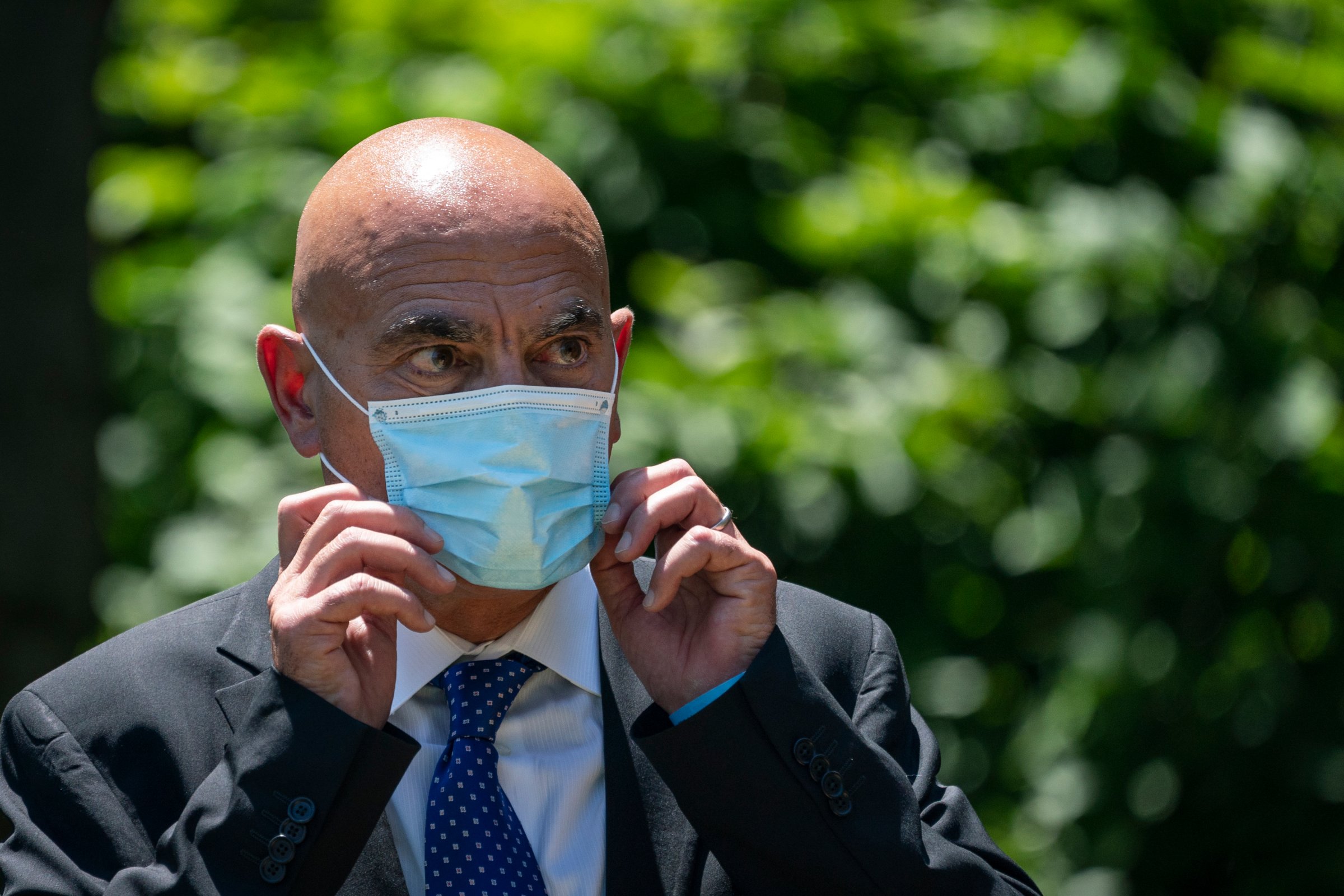
As the COVID-19 pandemic enters its 10th month, the pressure to develop an effective vaccine, or vaccines, continues to mount. Speaking at the Johns Hopkins University and University of Washington Vaccine Symposium online, Dr. Moncef Slaoui, scientific head of Operation Warp Speed—the government organization funding and supporting development and distribution of COVID-19 vaccines—provided the latest updates on when a vaccine (and how many doses) might be available in coming months.
Perhaps most strikingly, Slaoui said that the government has told vaccine manufacturers not to seek authorization of their drugs from the Food and Drug Administration (FDA) until they have enough doses to provide to a desperate public. “We have recommended to companies that if they achieve efficacy demonstration while no vaccine doses are available at industrial scale of several million doses to at least immunize a relevant fraction of the population, then they should refrain or consider refraining from filing an emergency use authorization, because the populations would have a major disappointment [over] expectation of the availability of the vaccine,” he said.
Emergency use authorization (EUA) is an accelerated review and authorization process by the FDA that would allow vaccine makers to distribute vaccines that are safe and effective but not fully approved by the agency.
Slaoui also supported the FDA in its recent conflict with the White House over stringent guidelines proposed by the agency for evaluating data from vaccine studies, which include a recommendation that all vaccine trial volunteers be followed for two months for any potential side effects. Vaccine makers supported the guidelines, but after initially rejecting them, arguing they would delay availability of the vaccines, the White House has accepted them.
At this point, meeting demand would not be a problem if an EUA were given to the two vaccines, made by Moderna and Pfizer, that are currently furthest along in testing. The companies began late-stage testing for these vaccine candidates in the summer, and Slaoui said the manufacturers have been manufacturing doses at large scale in parallel to testing. The government began stockpiling doses of these unapproved but promising vaccines “in the single digit millions” in September, and will continue to do so in October, he said, and both Moderna and Pfizer will likely have 20 to 30 million doses produced by November and December this year.
Two of the other most promising vaccines in development are from AztraZeneca and J&J, both of which are quickly enrolling participants in late stage studies outside of the U.S., and may deliver first hints of safety and effectiveness by late October or early November. However, even if those results prove positive, these companies would likely have to consider waiting until their manufacturing capabilities have increased before requesting EUA from the FDA. “At that time there will be very few doses of vaccine if a decision was made to approve them,” said Slaoui. “So we are working hard to accelerate manufacturing and stockpiling and will likely have a few tens of millions of doses from January onward.”
He noted that there are now 25 manufacturing sites across the U.S. dedicated to manufacturing COVID-19 vaccine candidates, half focusing on the virus-based parts of the vaccine that would train and activate the immune system, and half charged with producing the vials and other sterile equipment needed to construct a vaccine delivery system.
“We feel comfortable that within the next month, or month and a half, we will have one or two vaccines that will have a read on efficacy and for which there will be enough vaccine doses in November and December to immunize, with two doses, 30 million people first in December and then another 50 million in January,” says Slaoui.
More Must-Reads from TIME
- Donald Trump Is TIME's 2024 Person of the Year
- Why We Chose Trump as Person of the Year
- Is Intermittent Fasting Good or Bad for You?
- The 100 Must-Read Books of 2024
- The 20 Best Christmas TV Episodes
- Column: If Optimism Feels Ridiculous Now, Try Hope
- The Future of Climate Action Is Trade Policy
- Merle Bombardieri Is Helping People Make the Baby Decision
Contact us at letters@time.com